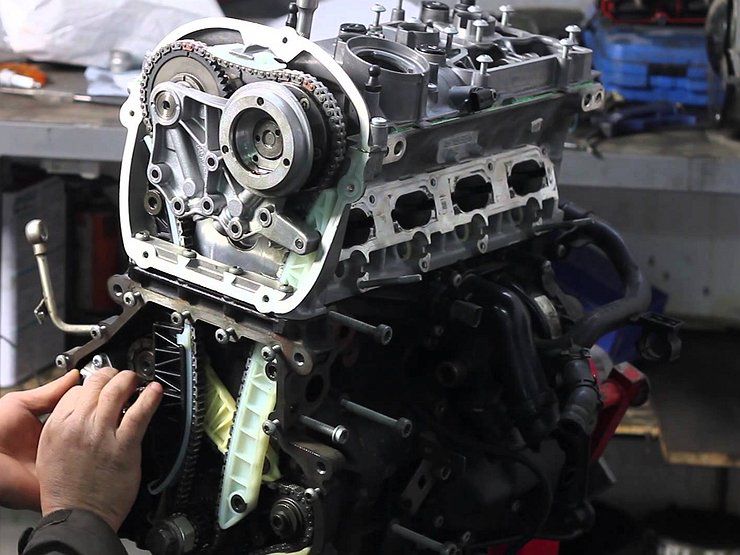What problems can arise with a naturally aspirated engine in the heat?
- June 20, 2022
- 0
It is generally accepted that summer is a favorable time for motorists. However, all this until the moment when the most desirable season comes into its own and
It is generally accepted that summer is a favorable time for motorists. However, all this until the moment when the most desirable season comes into its own and

Just like a human body, a car can react to various factors, including external ones. For example, the engine is sensitive to changes in atmospheric pressure and even temperature, making it feel noticeably different. And even unpretentious naturally aspirated engines can fail if it’s too hot outside. But why is it so?
You should understand that the amount of oxygen in the air that the engines of all ICE vehicles breathe is determined by atmospheric factors such as: pressure, temperature and humidity. The combustion engine, in turn, has special sensors that monitor the amount of air entering the combustion chambers. The optimal ratio is 14.7:1. That is, 14.7 kilograms of air should represent 1 kilogram of gasoline. And all these sensors in the engine adhere to a certain formula. If the amount of fuel can be controlled quite accurately, then the amount of oxygen in the air, as we understand it, is not stable.
For example, in cold weather, the air is denser and contains more oxygen. To which our cars responded by increasing power. When it’s raining and muddy outside, there’s less oxygen in the air. Consequently, the engine power is slightly reduced in such weather. However, in our latitudes, it is really minuscule.
But in the heat, when the saturation of the air with oxygen is also low, the power can noticeably decrease. Hence the strange behavior of the bike – crashes, doesn’t pull, is harder to overtake.
You should not sin on a malfunction of the engine when it noticeably loses grip at an apparently stable temperature regime overboard. Just look at atmospheric pressure. If it is lowered, this is the reason the engine has lost power. When the pressure rises, and there is more oxygen in the air, the power will return, or even increase.
Mountains are a good example of pressure. The higher you climb, the thinner the air and the less oxygen it contains. The car literally refuses to respond to the accelerator pedal. But it’s worth descending into the valley, when agility returns. By the way, in the mountains, for every 100 meters of rise, the engine power is reduced by 1%.
In general, if you notice that your car’s engine is losing traction, you should first evaluate the external factors that could be affecting it. Perhaps you climb a viewing platform high in the mountains, or on the street the thermometer has crossed +30. Then the changed behavior of the machine is most likely the norm.
SUBSCRIBE FOR EXCLUSIVE CONTENT
PORTAL “AVTOVGLYAD” IN TELEGRAM

Just like a human body, a car can react to various factors, including external ones. For example, the engine is sensitive to changes in atmospheric pressure and even temperature, making it feel noticeably different. And even unpretentious naturally aspirated engines can fail if it’s too hot outside. But why is it so?
You should understand that the amount of oxygen in the air that the engines of all ICE vehicles breathe is determined by atmospheric factors such as: pressure, temperature and humidity. The combustion engine, in turn, has special sensors that monitor the amount of air entering the combustion chambers. The optimal ratio is 14.7:1. That is, 14.7 kilograms of air should represent 1 kilogram of gasoline. And all these sensors in the engine adhere to a certain formula. If the amount of fuel can be controlled quite accurately, then the amount of oxygen in the air, as we understand it, is not stable.
For example, in cold weather, the air is denser and contains more oxygen. To which our cars responded by increasing power. When it’s raining and muddy outside, there’s less oxygen in the air. Consequently, the engine power is slightly reduced in such weather. However, in our latitudes, it is really minuscule.
But in the heat, when the saturation of the air with oxygen is also low, the power can noticeably decrease. Hence the strange behavior of the bike – crashes, doesn’t pull, is harder to overtake.
You should not sin on a malfunction of the engine when it noticeably loses grip at an apparently stable temperature regime overboard. Just look at atmospheric pressure. If it is lowered, this is the reason the engine has lost power. When the pressure rises, and there is more oxygen in the air, the power will return, or even increase.
Mountains are a good example of pressure. The higher you climb, the thinner the air and the less oxygen it contains. The car literally refuses to respond to the accelerator pedal. But it’s worth descending into the valley, when agility returns. By the way, in the mountains, for every 100 meters of rise, the engine power is reduced by 1%.
In general, if you notice that your car’s engine is losing traction, you should first evaluate the external factors that could be affecting it. Perhaps you climb a viewing platform high in the mountains, or on the street the thermometer has crossed +30. Then the changed behavior of the machine is most likely the norm.
SUBSCRIBE FOR EXCLUSIVE CONTENT
PORTAL “AVTOVGLYAD” IN TELEGRAM
Source: Avto Vzglyad
I’m Sandra Torres, a passionate journalist and content creator. My specialty lies in covering the latest gadgets, trends and tech news for Div Bracket. With over 5 years of experience as a professional writer, I have built up an impressive portfolio of published works that showcase my expertise in this field.